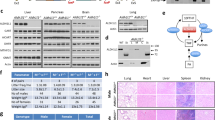Abstract
Hereditary tyrosinemia type I (HT1) is an autosomal recessive disease caused by a deficiency in human fumarylacetoacetate (FAA) hydrolase (FAH), which is the last enzyme in the catabolic pathway of tyrosine. Several reports suggest that intracellular accumulation of intermediates of tyrosine catabolism, such as FAA and succinylacetone (SA) is important for the pathogenesis in liver and kidney of HT1 patients. In this work, we examined the effect of FAA and SA on DNA glycosylases initiating base excision repair (BER), which is the most important pathway for removing mutagenic DNA base lesions. In vitro assays monitoring DNA glycosylase activities demonstrated that FAA but not SA inhibited base removal. In particular, the Neil1 and Neil2 DNA glycosylases were strongly inhibited, whereas inhibition of Nth1 and Ogg1 were less efficient. These DNA glycosylases initiate excision of a broad range of mutagenic oxidative base lesions. Further, FAA showed a modest inhibitory effect on the activity of the alkylbase DNA glycosylase Aag and no significant inhibition of the uracil DNA glycosylase Ung2. These data indicate that FAA inhibition of DNA glycosylases removing oxidative base lesions in HT1 patients may increase mutagenesis, suggesting an important mechanism for development of hepatocarcinoma and somatic mosaicism.


Similar content being viewed by others
References
Aspinwall R, Rothwell DG, Roldan-Arjona T, Anselmino C, Ward CJ, Cheadle JP, Sampson JR, Lindahl T, Harris PC, Hickson ID (1997) Cloning and characterization of a functional human homolog of Escherichia coli endonuclease III. Proc Natl Acad Sci 94:109–114
Bjørås M, Luna L, Johnsen B, Hoff E, Haug T, Rognes T, Seeberg E (1997) Opposite base-dependent reactions of a human base excision repair enzyme on DNA containing 7,8-dihydro-8-oxoguanine and abasic sites. EMBO J 16:6314–6322
Bliksrud YT, Brodtkorb E, Andresen PA, van den Berg I, Kvittingen EA (2005) Tyrosinaemia type I-de novo mutation in liver tissue suppressing an inborn splicing defect. J Mol Med 5:406–410
Chan MK, Ocampo-Hafalla MT, Vartanian V, Jaruga P, Kirkali G, Koenig KL, Brown S, Lloyd RS, Dizdaroglu M, Teebor GW (2009) Targeted deletion of the genes encoding NTH1 and NEIL1 DNA N-glycosylases reveals the existence of novel carcinogenic oxidative damage to DNA. DNA Repair (Amst) 8:786–794
Dalhus B, Lærdahl JK, Backe PH, Bjørås M (2009) DNA base repair—recognition and catalysis. FEMS Microbiol 33:1044–1078
Dalhus B, Forsbring M, Helle IH, Vik ES, Forstrom RJ, Backe PH, Alseth I, Bjørås M (2011) Separation-of-function mutants unravel the dual-reaction mode of human 8-oxoguanine DNA glycosylase. Structure 19:117–127
Feig DI, Sowers LC, Loeb LA (1994) Reverse chemical mutagenesis: identification of the mutagenic lesions resulting from reactive oxygen species-mediated damage to DNA. Proc Natl Acad Sci 91:6609–6613
Hazra TK, Izumi T, Boldogh I, Imhoff B, Kow YW, Jaruga P, Dizdaroglu M, Mitra S (2002a) Identification and characterization of a human DNA glycosylase for repair of modified bases in oxidatively damaged DNA. Proc Natl Acad Sci 99:3523–3528
Hazra TK, Kow YW, Hatahet Z, Imhoff B, Boldogh I, Mokkapati SK, Mitra S, Izumi T (2002b) Identification and characterization of a novel human DNA glycosylase for repair of cytosine-derived lesions. J Biol Chem 277:30417–30420
Jorquera R, Tanguay RM (1997) The mutagenicity of the tyrosine metabolite, fumarylacetoacetate, is enhanced by glutathione depletion. Biochem Biophys Res Commun 232:42–48
Liu M, Bandaru V, Bond JP, Jaruga P, Zhao X, Christov PP, Burrows CJ, Rizzo CJ, Dizdaroglu M, Wallace SS (2010) The mouse ortholog of NEIL3 is a functional DNA glycosylase in vitro and in vivo. Proc Natl Acad Sci 107:4925–4930
Mitchell GA, Grompe M, Lambert M, Tanguay RM (2001) Hypertyrosinemia. In: Scriver CR et al (eds) The meatbolic & molecular bases of inherited disease. McGraw-Hill, New York, pp 1777–1805
Morland I, Rolseth V, Luna L, Rognes T, Bjørås M, Seeberg E (2002) Human DNA glycosylases of the bacterial Fpg/MutM superfamily: an alternative pathway for the repair of 8-oxoguanine and other oxidation products in DNA. Nucleic Acids Res 30:4926–4936
O’Brien PJ, Ellenberger T (2004) Dissecting the broad substrate specificity of human 3-methyladenine-DNA glycosylase. J Biol Chem 279:9750–9757
Ravdin RG, Crandall DI (1951) The enzymatic conversion of homogentisic acid to 4-fumarylacetoacetic acid. J Biol Chem 189:137–149
Shibutani S, Takeshita M, Grollman AP (1991) Insertion of specific bases during DNA synthesis past the oxidation-damaged base 8-oxodG. Nature 349:431–434
van Dyk E, Pretorius PJ (2012) Impaired DNA repair and genomic stability in hereditary tyrosinemia type 1. Gene 495:56–61
van Dyk E, Steenkamp A, Koekemoer G, Pretorius PJ (2010) Hereditary tyrosinemia type 1 metabolites impair DNA excision repair pathways. Biochem Biophys Res Commun 401:32–36
Xie Y, Yang H, Cunanan C, Okamoto K, Shibata D, Pan J, Barnes DE, Lindahl T, McIlhatton M, Fishel R, Miller JH (2004) Deficiencies in mouse Myh and Ogg1 result in tumor predisposition and G to T mutations in codon 12 of the K-ras oncogene in lung tumors. Cancer Res 64:3096–3102
Acknowledgments
We thank Lars Mørkrid for help with statistical analyses and Pernille Strøm Andersen and Mari Ytre-Arne for technical assistance with protein purification. We thank Professor Cynthia Burrows for the Sp oligo.
Conflict of interest
None.
Author information
Authors and Affiliations
Corresponding author
Additional information
Communicated by: Jörn Oliver Sass
Rights and permissions
About this article
Cite this article
Bliksrud, Y.T., Ellingsen, A. & Bjørås, M. Fumarylacetoacetate inhibits the initial step of the base excision repair pathway: implication for the pathogenesis of tyrosinemia type I. J Inherit Metab Dis 36, 773–778 (2013). https://doi.org/10.1007/s10545-012-9556-0
Received:
Revised:
Accepted:
Published:
Issue Date:
DOI: https://doi.org/10.1007/s10545-012-9556-0




